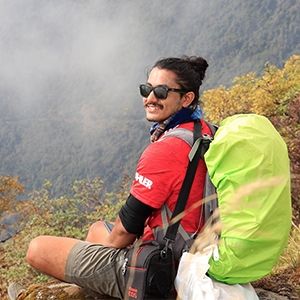Highlights of Everest Base Camp Trek
- Dramatic and Scenic flight to one of the most dangerous airports in the world- Lukla Airport,
- Explore rare flora and fauna as trekking through the alpine forests of Sagarmatha National Park,
- Acclimatization at Namche Bazaar, a vibrant Sherpa Town and gateway to the Everest Region,
- Best Time to explore the Sherpa Culture, Traditions, and unique Hospitality,
- Crossing several high-suspension bridges over deep gorges and rushing rivers,
- Breathtaking Panoramic views of Mt. Everest from Everest View Hotel, highest placed hotel in the world,
- Beautiful and Peaceful Tengboche Monastery with unique Culture and Mountain Views,
- Encounter the massive Khumbu Glacier(4,500 m) en route to Everest Base Camp,
- Kala Patthar (5,545m), the highest viewpoint in the world, offers you mesmerizing views of Mt. Everest, Lhotse, Nuptse, and so on,
- Trek to the base camp of the world’s highest peak, Mt. Everest 8,848.86m.
How long is the Everest Base Camp Trek?
Typically, the Everest Base Camp Trekking takes 12 days to complete on a 130km round-trip but it depends on the fitness level of the trekker, weather, rest day, etc. It takes eight days to get to Base Camp and four days to get back down, broken down overall into nine days of long trekking and three short trekking and acclimatization days.
The EBC trek takes you through various villages, camping grounds, and incredibly isolated spots with magnificent views of the mountain panoramas.
- Way up: Kathmandu – Lukla – Phakding – Namche Bazaar – Debuche – Dingboche – Lobuche – Gorak Shep – Everest Base Camp – Kala Patthar
- Way down: Kala Patthar – Gorak Shep – Pheriche – Namche Bazaar – Lukla – Kathmandu
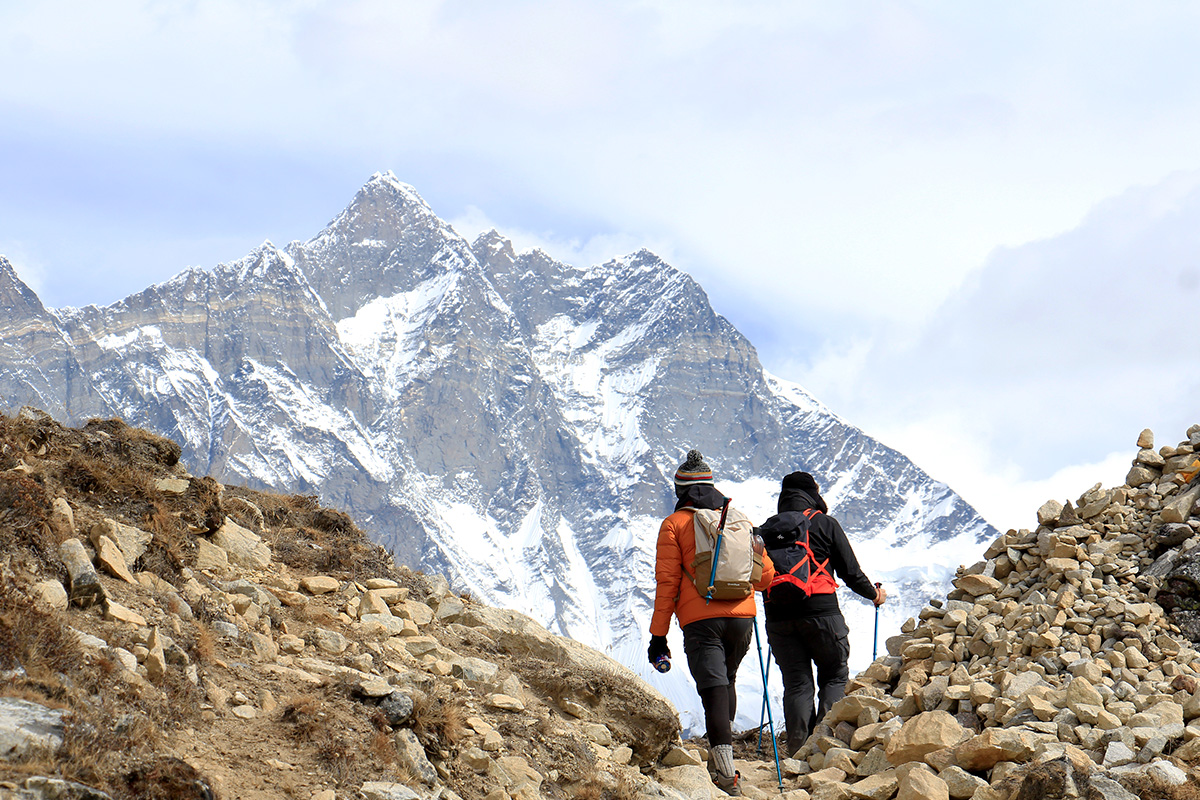
Normal Itinerary for Everest Base Camp Trek
Day 1: Fly from Kathmandu to Lukla and Trek to Phakding village (2,650m)
- Flight Time: 30 mins Flight
- Trekking Distance: 9 km / 5.6 miles
- Trekking Time: 3 - 4 Hours
Day 2: Trek from Phakding to Namche Bazaar (3,440 m)
- Trekking Distance: 11km / 6.8 miles
- Trekking Time: 6 - 7 Hours
Day 3: Acclimatization Day at Namche Bazaar (Thame/ Khumjung/ Everest View Hotel) (3,880m)
- Trekking Distance: 4.6 km / 2.8 miles
- Trekking Time: 3 - 4 Hours
Day 4: Trek from Namche Bazaar to Debuche (3,720m) (Tengboche/Pangboche)
- Trekking Distance: 13 km / 8.12 miles
- Trekking Time: 6 - 7 Hours
Day 5: Trek from Debuche to Dingboche (4,410m)
- Trekking Distance: 8.5 km / 5.3 miles
- Trekking Time: 5 - 6 Hours
Day 6: Acclimatization Day at Dingboche (4,410m) (Pheriche)
- Trekking Distance: 4.5 km / 2.8 miles
- Trekking Time: 4 - 5 Hours
Day 7: Trek from Dingboche to Lobuche Village (5,050m) (Hike to Nagarjun Hill)
- Trekking Distance: 9 km / 5.6 miles
- Trekking Time: 4 - 5 Hours
Day 8: Trek to the Everest Base Camp (5,364m) crossing Khumbu Glacier and Stay at Gorak Shep (5,164m)
- Trekking Distance: 12 km / 7.4 miles
- Trekking Time: 7 Hours
Day 9: Hike to Kala Pattar viewpoint (5,545 m) for a sunrise view of Mt. Everest, Trek to Pheriche (Pangboche)
- Trekking Distance: 16 km / 10 miles
- Trekking Time: 7 - 8 Hours
Day 10: Trek from Pheriche to Namche Bazaar
- Trekking Distance: 19 km / 11.8 miles
- Trekking Time: 7- 8 Hours
Day 11: Trek from Namche Bazaar to Lukla Village
- Trekking Distance: 19 km / 11.8 miles
- Trekking Time: 7- 8 Hours
Day 12: Fly back to Kathmandu
- Flight Time: 30 mins Flight
How to Get to Everest Base Camp: Travel Routes & Logistics
The expedition to Everest Base Camp is both hiking and flight. Here's how you do it:
Step 1: Fly initially to Lukla.
The ride of the 30 minutes in a thrilling flight from Kathmandu to Lukla marks the beginning of your adventure. The airport at Lukla is renowned for its brief runway and beautiful landscape of the mountains. It best to have a early morning flight since weather can be unpredictable in the afternoon.
Step 2: Trek from Everest Base Camp to Lukla
The Everest Base Camp to Lukla trekking is usually for 12–14 days. You will be going on uneven terrain, pine forests, and Sherpa villages. Some notable stops include:
- Phakding (2,610m)
- Bazaar Namche (3,440m)
- Tengboche (3,860m)
- Dingboche (4,410m)
- Lobuche (4,940m)
- Shep Gorak (5,164m)
Step 3: Home return
Most of the trekkers follow the same route back to Lukla in an effort to board their planes back to Kathmandu.
Is the Everest Base Camp Trek difficult?
The 2-weeks Everest Base Camp Trek is both challenging and beautiful full of adventure. This physically demanding trip requires a bit of proactive preparedness to succeed. Exercising and jogging regularly for a couple of weeks before the trip departure is a good idea to enhance our stamina. Novice trekkers with normal fitness levels can accomplish the trek, however, the fitter we are, the more enjoyable experience we will have during the trekking. Past hiking experience would be an added advantage but no technical experience and skills are necessary. Trekkers who are able to hike 4 to 6 hours a day at a reasonable pace with a light day pack can take part in this trip. The trekking route involves hiking along the rocky mountain, steep ascents, descents, and straightforward. It is very important to make sure you are as healthy as possible before starting the trek. Participants with pre-existing medical conditions such as heart, lung, and blood disease should inform us or consult with their physician before booking the trek. Read more about the difficulty of Everest Base Camp Trek.
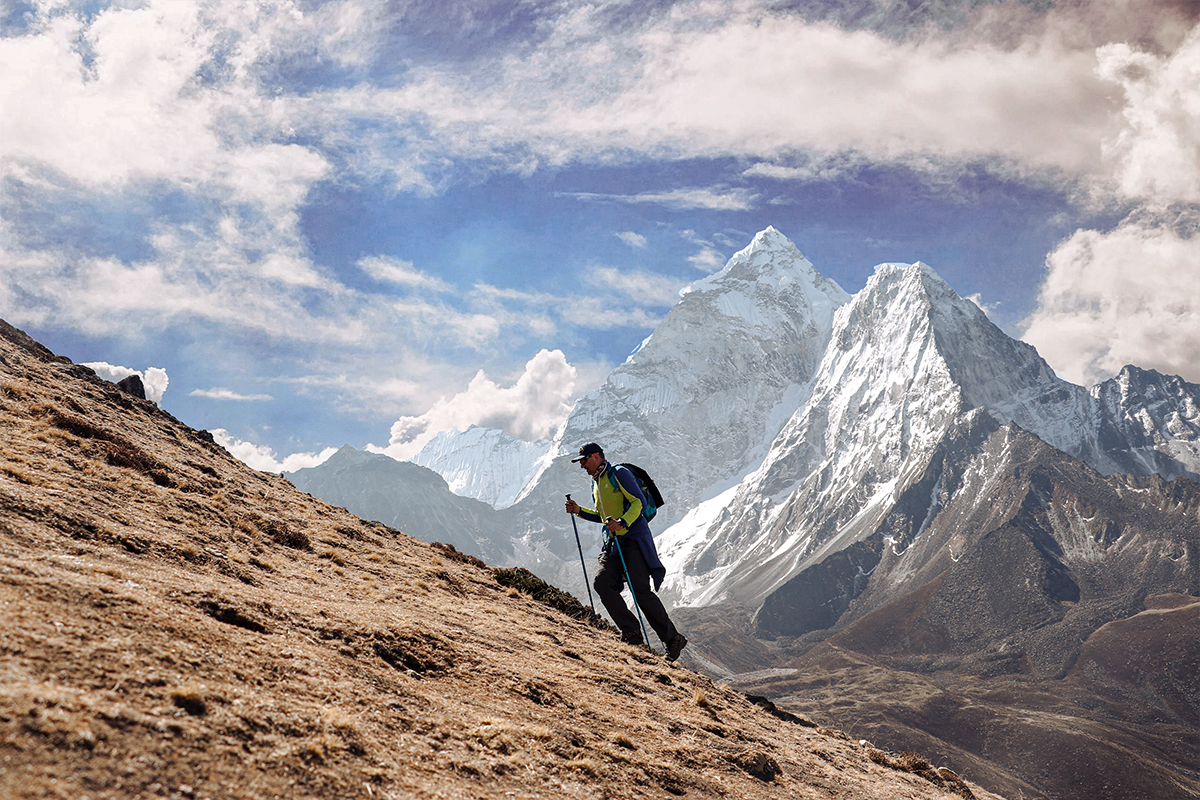
How High is Everest Base Camp
The striking elevation of 5,364 meters (17,598 feet) above sea level is home to Everest Base Camp. That's higher than a lot of well-known summits worldwide! The walk is extremely difficult at this height due to the thin air and low oxygen levels.
Your body requires time to acclimate to this height. To properly acclimate, the majority of trekkers take additional rest days in locations like Namche Bazaar and Dingboche. Altitude sickness can be deadly if these stops are skipped.
The breathtaking alpine view and sense of accomplishment make the strenuous climb worthwhile. For every adventurer, arriving at Everest Base Camp is like entering a realm of ice-capped peaks and boundless horizons.
Everest Base Camp Elevation in Feet & Meters
Everest Base Camp is 5,364 meters (17,598 ft) above sea level. That is over fifty times taller than the tallest structure in Nepal!
At crucial spots, allow additional days to acclimate to this high altitude. Common place locations such as Namche Bazaar and Dingboche are ideal for allowing your body to adjust. Make sure to let your body to acclimate to the thin air is essential for both your comfort and well-being.
To alleviate the discomfort, most hikers also take altitude sickness medications. Your chances of safely arriving at Everest Base Camp can also be increased by drinking plenty of water, walking steadily, and eating light meals.
What gear do you need to pack for Everest Base Camp Trek?
Packing the right equipment and gear is very important during the trek to Everest Base Camp. You must know how to pack during the trek as you will be carrying it the whole time throughout the trek. The following is the EBC gear list you need:
Basic Packing Checklist:
- Base layers (moisture-wicking tops and bottoms)
- Fleece jackets or down jackets
- Waterproof and windproof outer shell jacket and pants
- Trekking pants (quick-drying and comfortable)
- Lightweight and breathable Tshirts
- Sturdy Trekking Boots
- Medications and so on.
Gear Checklist:
- Trekking Poles
- Crampons (For Winter Treks)
- Snow Gaiters (For monsoon season, snowfall, and crossing ice)
- Headlight/ Torchlight
- Ice Axe (Optional)
For a more detailed EBC Trek Gear List, visit here.
How much does it cost for Everest Base Camp Trek?
On average the journey itself is of 10-14 days, and the "cost of EBC trek generally is somewhere between $1,500 to $3,000 which includes domestic flights, trekking permits, full board meals (Breakfast, Lunch & Dinner), a professional trekking guide, and porter, accommodations, and certificate of completion of the journey. Generous discounts can be made if you travel in groups and fixed dates forFootprint Adventure.
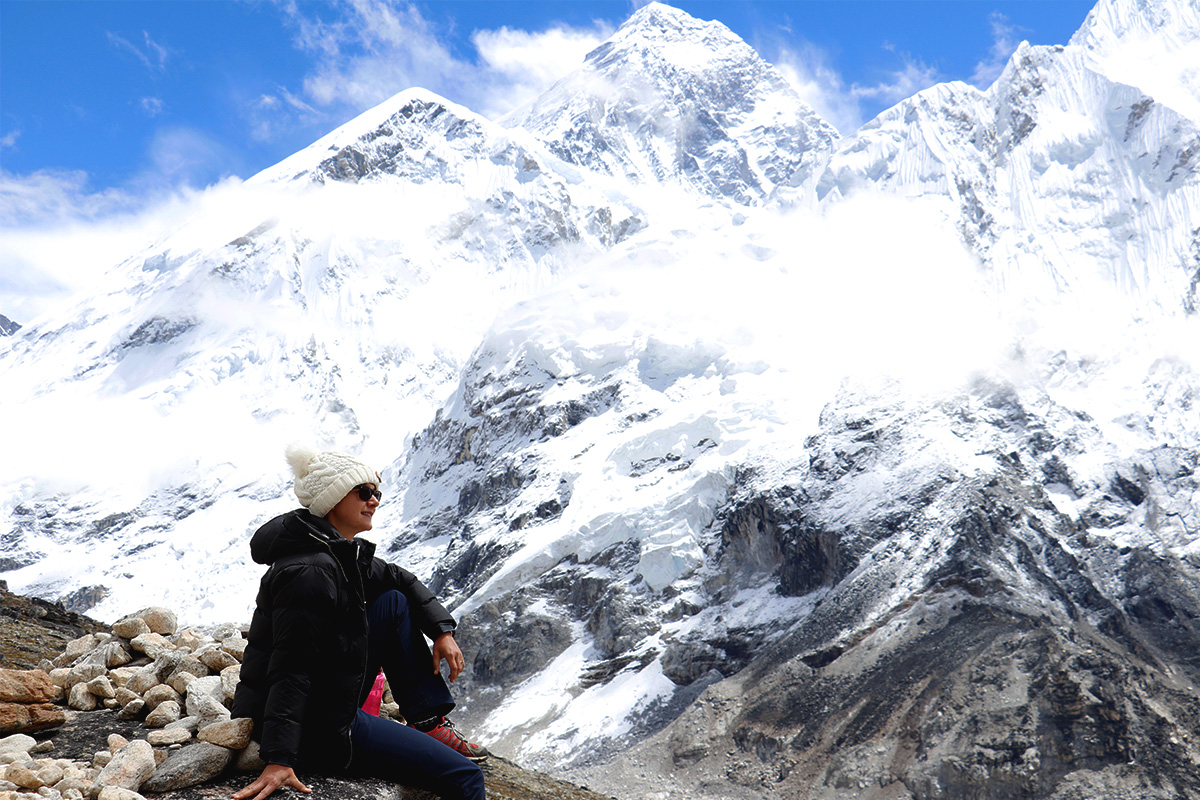
EBC trek costs highly depend upon whether you're traveling privately or in a group. Traveling in Group can be cheaper as you'll share Trek leaders and porters whereas private treks are tailored as per requirements. Also, in terms of services and upgradation of accommodations to Luxury one varies the prices of EBC trek.
Is the Trek to Everest Base Camp Dangerous?
More than 50,000 people per year trek to Everest Base Camp on its south side in Nepal. While it remains one of the most popular and well-versed treks in the Himalayas, it’s natural to consider how dangerous this high-altitude endeavor is. With regards to the terrain, you will not be undertaking any form of wall climbing, walking along narrow ridges with steep drops, or using ropes to haul yourself over rock faces. Getting to Everest Base Camp is a slow and steady walk with a strategically timed ascent into altitude.
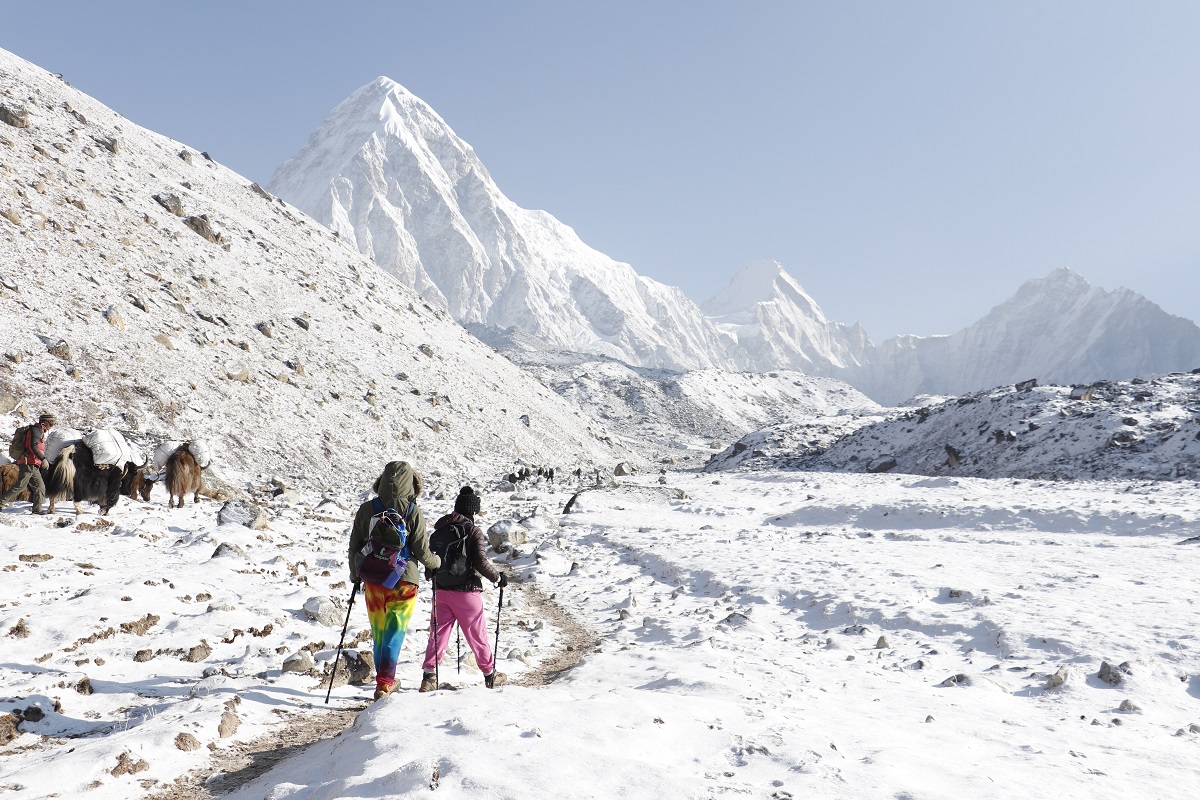
Extreme thoughts may move to the question: has anyone died trekking to Everest Base Camp? The fact remains that while there are no official figures, any statistic reported has been less than 0.5% of the overall trekking number, and is usually because of a natural disaster. The only danger to you will be if you don’t listen to the advice of your guide or wander off alone.
What are the best seasons for Everest Base Camp Trek?
Weather in the Himalayas is variable, and the best trekking seasons are usually determined by the arrival of the summer monsoon. In order to avoid the wettest conditions, many hikers travel during the spring, which occurs from March to May. This is the time of year when wildflowers are in bloom and temperatures are at their most comfortable. Other trekkers might prefer to undertake the EBC Trek during the autumn season, between September and November. This is perhaps the best time of year for crisp days and clear mountain views. Of course, winter treks are also possible; while temperatures can be cold and trails can be packed with snow, there is an undeniable appeal to enjoying the EBC Trek without a crowd. We typically recommend hiking the Everest Trek during the summer. However, with proper guidance, information, and research about the mountains and climate, you can trek in the Everest region for the entire year. Know more about the weather and climate of Nepal,here.
What are the alternative routes to Everest Base Camp Trek?
The Lukla airport serves as a gateway to Everest, located 2,840 meters above sea level. The small runway and unpredictability of the weather make this airport one of the most dangerous airports in the world. Flights are frequently delayed and canceled at this airport.
Therefore, there are alternative routes to reach the Lukla for EBC Trek:
From Jiri
Trekking from Jiri to Lukla is a very popular alternative route for EBC Trek. A 7-hour drive from Kathmandu starts your journey to Jiri, a small town in the eastern part of Nepal. As you start the trek, you will ascend gradually to the Khumbu region through the picturesque scenery and attractive villages. The trek continues along the traditional path after leaving the classic Everest Base Camp Trail at Phakding via well-known destinations like Namche Bazaar, Debuche, Dingboche, Lobuche, and Gorakshep before you reach the Everest Base Camp.
However, this is comparatively a longer trek for the ones seeking extra adventure and uniqueness in their trek to Everest Base Camp.
From Salleri
8-9 hours drive from Kathmandu takes you to Salleri, an alternative route to reach EBC. Salleri takes you through the beautiful towns of Taksindo, Paiya, and Surke. The Salleri route to Everest Base Camp is also known as the "Best Trek for Adventure Travelers" since it includes more trekking days through off-the-beaten paths to EBC. To get to Salleri, you must cross rivers, forests, and exotic terrain. Your trek continues to Okhaldhunga, Nepal, after crossing the Sunkoshi River. The following day, you will hike to Taksindo and then travel from there to Kharikhola, where you will eventually arrive in Ringmo Village. Depending on your speed, the journey requires 130 kilometers of trekking over 18–19 days. You will then travel through Paiya, Surke, and Phakding on your way to Namche Bazaar, the village that serves as the entrance to Everest Base Camp.
Fly from Manthali Airport
The distance between Ramechhap and Kathmandu is 146 kilometers. While traveling to Lukla from Kathmandu won't seem realistic, airlines operate daily flights to the Manthali airport, which is home to Ramechhap's administrative offices. It just takes 17 minutes to get from Manthali airport to Lukla on a flight, which helps travelers avoid backed-up air traffic during peak seasons. Ramechhap is reachable from Kathmandu by bus, jeep, or private vehicle and is a four-hour trip away. There is little possibility of a delay or cancellation due to air traffic when departing from Manthali Airport because it entirely handles flights to Lukla.
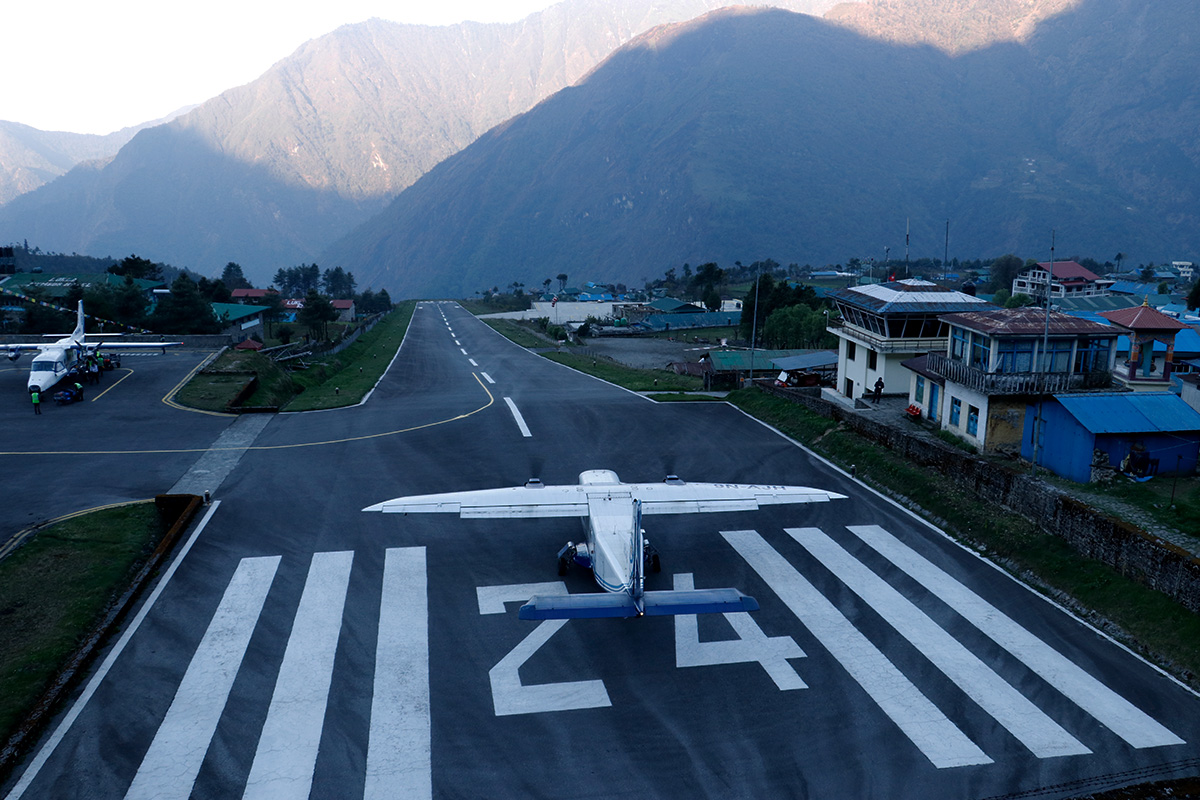
How cold is it at Everest Base Camp?
The first few days of trekking in the low Himalayan forest are in warm and slightly moderate temperatures, the second half of the trek takes you right into the cooler and often freezing altitudes of the mountain plateau. On Base Camp itself, temperatures can vary from 1 to -15 degrees, on average. Be prepared with base layers, mid-layers, and a down jacket – the morning trek can also be a slog in icy winds so you’ll want to be as comfortable as possible.
How is the accommodation in Everest Base Camp Trek?
During the Everest trek, the normal accommodation will be a tea house, hotels, and some resorts (if you plan for a luxury trip). Normally Lukla, Phakding, and Namche Bazaar offer some luxury hotels and guest houses. Afterward, the living places will be on a normal, sharing basis, but every teahouse offers the best services per altitude and remoteness. The rooms are designed with two single beds and small tables inside with amazing mountain-view windows. The bed has good mattresses, bedsheets, blankets, and a pillow for your comfort. Once we leave Namche Bazaar and head towards base camp, you will notice the number of tea houses is reportedly less, and so will the occupants.
You also have the choice of Everest Base Camp Luxury Trek for extra luxury and comfort during your trek to the Everest Base Camp. Yeti Mountain Home is a popular network of Luxury Lodges located on the trekking routes of the Everest Base Camp. These luxury lodges offer comfortable accommodations and excellent services for trekkers and travelers in the region. These lodges are strategically located along the popular EBC trekking trail to offer a cozy retreat in the middle of the stunning Himalayan Scenery. Each of their lodges at Lukla, Phakding, Monjo, Namche Bazaar, Thame, Deboche, and Kongde, are well appointed with hot showers, and comfortable beds, and offer delicious meals ensuring a pleasant and rejuvenating experience to the guests. Yeti Mountain Home is the best option for luxury accommodations in the Himalayas of Nepal with the blend of traditional hospitality and modern comforts especially for trekkers to relax and recharge in a cozy and serene mountain environment during Everest Region Treks.
How is the food in Everest Base Camp Trek?
You will get almost all the regular international and continental cuisine along with local tastes in the Everest region. From traditional Nepalese food and Sherpa dishes to international favorite dishes, you can easily find them on the menu. Also, you can get fresh bakeries, Barista coffees, fresh cakes, muffins, and some other renowned baked goodies. They serve vegetarian, vegan meals, and gluten-free meals as well if you are required to. For these things, you should pre-inform your trekking leader/guide, so that they will ask the hotel to do so. Learn more about the popular foods of Nepal.

Entrance & Permits for Everest Base Camp Trek
You have to get the respective permit to enter the Everest Region. If you are traveling through the local travel agency, they will get all the necessary permits and access to the Everest Region. But for solo travelers, once you reach Lukla, you have to find first the office of Rural Municipality for the one permit, and the next day, you have to get the permit from the Sagarmatha National Park office, which is on the way (Manjo).
Permit for SAARC Countries:
- Rural Municipality Fee: Rs 2,000 (~18$)
- Sagarmatha National Park Fee: Rs 1,500 (~13$)
Permit for Remaining Countries:
- Rural Municipality Fee: Rs 3,000(~18$)
- Sagarmatha National Park Fee: Rs 3,000 (~26$)
Before starting your entire trek, it’s important to gather all the necessary permits and access documents, click here for more information.
Travel Insurance for Everest Base Camp Trek
When you are hiking or traveling in high altitudes,travel insuranceis very essential. It is one of the most critical documents for trekking in high mountains all over Nepal. EBC trek is a high altitude trek, and such a hike can be pretty hazardous, Therefore, if travelers, unfortunately, face any kind of consequences during the trekking, those travel insurance might be the best for you. It saves you from paying a huge amount at once, so we request all travelers get travel insurance before heading to Nepal for trekking and any kind of activities. Furthermore, make sure your insurance policy covers emergency helicopter evacuation and medical expenses, and also make sure the policy covers 6,000m altitude.
Is a solo trip possible for Everest Base Camp Trek?
Solo trekking in EBC trek is possible but not recommended. It is easy to navigate until Namche Bazaar, but afterward, the trail gets less busy and chances of losing the trail will be possible. The village becomes less, several diverse paths will come and if anything happens on the way, you might feel helpless. So, we highly recommend doing this trek in a group or with a guide. Group trek might be hectic for some trekkers but this is the best and safest option for high altitude trek. You might face the problems of altitude sickness, normal injuries, and other consequences. For such situations, local guides will help to take you to the necessary destinations and guide you safely until you reach your destination. Guides will show you the way, and pass on the necessary information regarding the trekking routes, mountains, peoples, languages, cultures, and practices and they will take care of your needs and well-being. So, do a solo trek in the Everest region, if you are well known about the routes and future consequences. However, it is very safe to travel to Nepal.
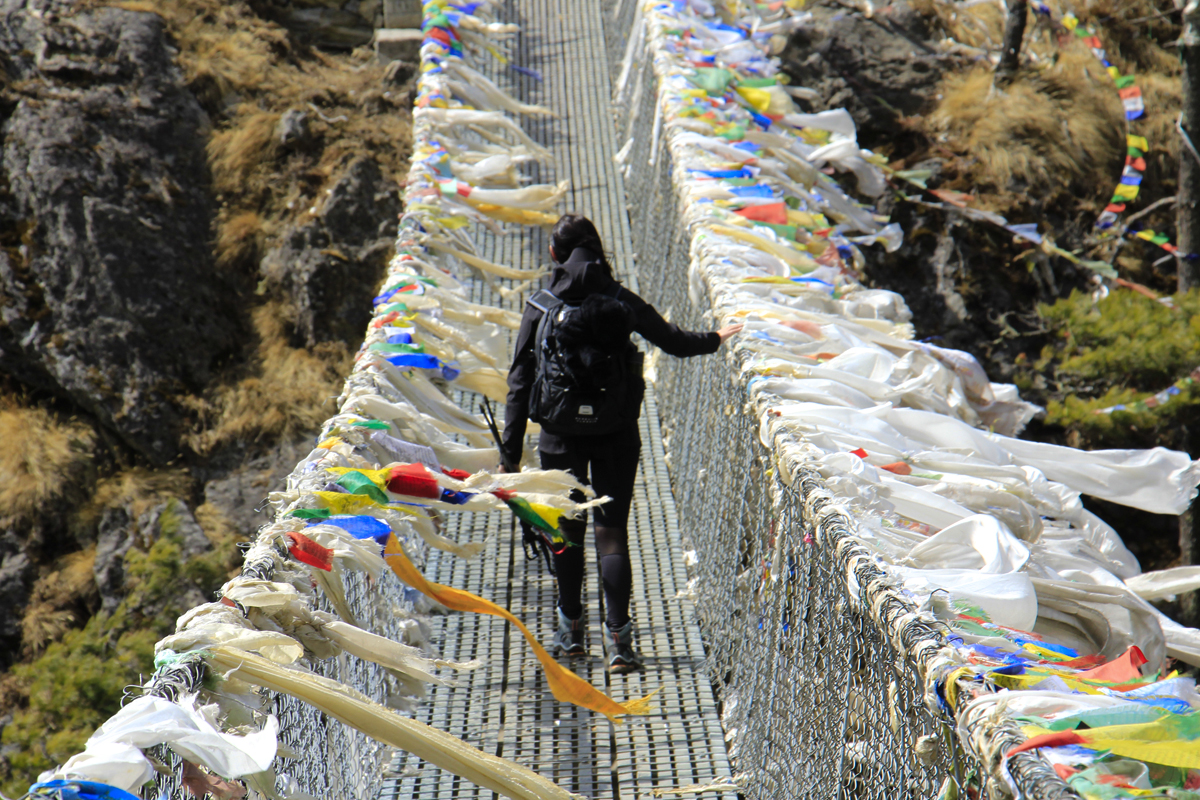
How is the facility of Internet, Electricity & Mobile Network?
The Everest trek is a popular and renowned trek in the world. So, the facility of internet, electricity, and mobile network is quite good as compared to the other trekking part in Nepal. There are different ways to use the internet on this trek. Either you can buy the local SIM card or you can get the wifi facility inside the teahouse which they will charge extra for you. Also, you can buy an Everest Link card that can also help you to access the internet. However, the network connections may not be fast and reliable. Furthermore, as you start reaching higher altitudes, the internet and network connection will be weaker. About electricity, you can get electricity until Pangboche, and from there they use solar power as regular electricity but they will charge a certain amount for it as well.

Acute Mountain Sickness & Preventive Measures
Acute Mountain Sickness (AMS) is not a regular situation, it only occurs when your body is not able to adjust to the high-altitude climate and environment. So, the sickness differs from person to person according to the age of people, health status, physical fitness, and experience of hiking at high altitudes. In EBC Trek, many people feel the symptoms of AMS. If the symptoms of the illness are not taken care of properly, the situation can even turn critical. That’s why we always suggest travelers trek with guides and local travel agencies.
Some Common Symptoms of AMS
- Headache ( both sides and one side of the head)
- Loss of appetite
- Nausea and vomiting sometimes.
- Tiredness and dizziness.
- Feel discomfort while sleeping.
- Increase the heart rate and shortness of breath.
Common Prevention
- Keep your body hydrated and drink at least 4-5 liters of water every day when you cross above 3,000m
- Take plenty of rest after finishing your daily hike.
- Consume enough food and calories while trekking.
- Wear enough and make your body warm.
- When you feel most of the AMS symptoms, descend to a lower altitude as soon as possible.
- Ascend slowly and acclimatize properly according to the needs of your body.
- Travel with a local guide and travel agency so that they will help you to trail for all the possible consequences.
There are few medicines like Diamox that help to prevent sickness. But, remember one thing, before taking any drugs related to AMS consult with related doctors or medical experts.
These are the essential aspects for one who is planning a trip to Everest Base Camp. It will give you an idea that many do not precisely fit when you find yourself on the trek. However, this guidebook is just a fraction of what the Everest Base Camp trek entails. In general, you will have exceptional times, although some aspects might be off-putting. The breathtaking views of snowy mountains, valleys, landscapes, and glacial scenery will be a rewarding experience.
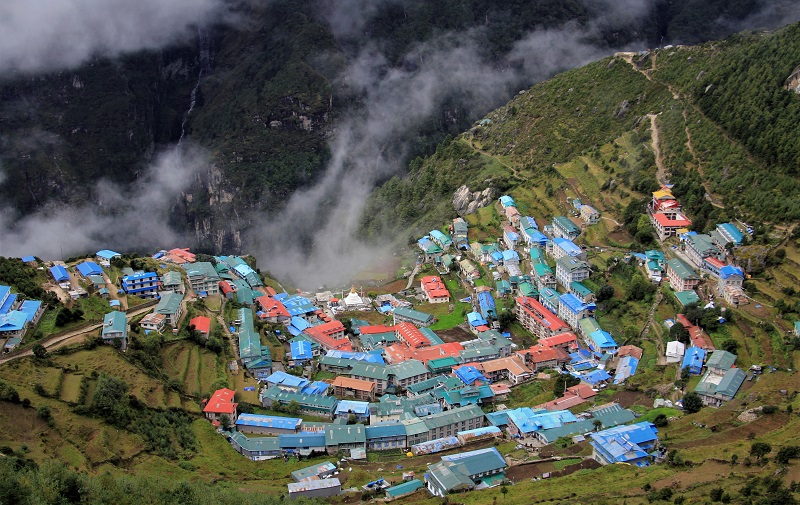
Even after the vast description and listing of the enticing attractions of the EBC trek; the question still arises “Is the EBC trek worth it?”, “ Is 12 days of a rigorous trek through the dense forests, alpine meadows, and challenging climb past the glaciers to reach the highest altitude 5,364 meters with the coldest of temperatures 1 degree actually worth it?”. The answer to this question is how you perceive this trek. Everest is more than a mountain and the journey to the base camp is more than a trek.
The trek to Everest Base Camp is a dream trip for many people. The dream of seeing the highest mountain peak in the world, Everest from the closest, is shared by a lot of enthusiastic trekkers. The breathtaking view of the first few golden rays of sun hitting the gigantic white snow-capped mountains is the best thing you witness in your lifetime. When you reach the base camp, a 360-degree view of the beautiful Himalayas gets you so mesmerized that you forget about the hardship on the way up here. We can assure you that the experience of this trek will change your life forever. So, yes the EBC trek is worth it. Contact us for more details about trekking in the Everest Region.
FAQs
Should I hire a guide or porter for the Everest Base Camp (EBC) trek?
Your trek can be safer and more pleasurable if you hire a guide or porter. Here's something to think about:
Guides:
- The routes, tea establishments, and emergency procedures are all familiar to the guides. They also exchange tales about Sherpa culture and the mountains.
- You should budget between $30 – $50 per day for a certified guide.
Porter
- Porters make your journey more comfortable and easier by carrying your bulky items.
- Porters typically bill between $20 – $30 per day.
Mandatory guide on the EBC?
Yes, hiring a licensed guide for the Everest Base Camp trek is now mandatory. This rule was introduced by the Nepali government in 2023 to ensure the safety of trekkers.
Do you need a guide for the Everest Base Camp trek?
Yes, the Nepali government requires all foreign trekkers to hire a licensed guide or porter for the Everest Base Camp trek.
How much is a guide for Everest Base Camp?
Hiring a guide costs about $30 to $50 per day. While this may seem like an extra expense, a guide offers tremendous value.
How do you plan an Everest Base Camp trek?
Pick a good season, book your Lukla flight early, arrange permits, train your body, and pack wisely, or you can book with a trekking agency to have a stress-free journey.
How much money do I need for the Everest Base Camp trek?
Budget around $1,200 to $1,800 for the entire trek. This covers your permits, flights, accommodation, meals, and guide or porter fees. Costs may vary based on your spending habits and choice of accommodations.











